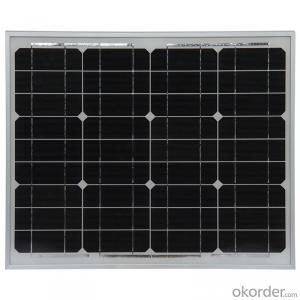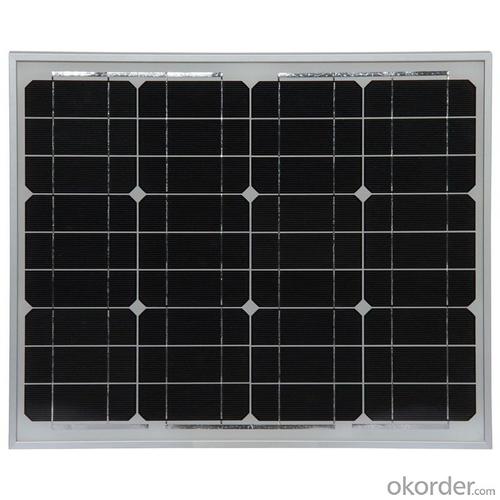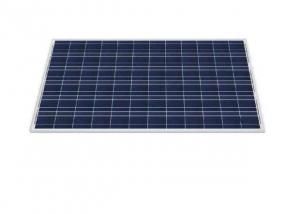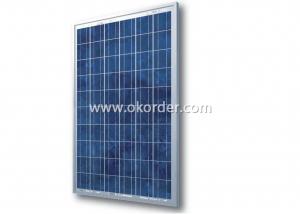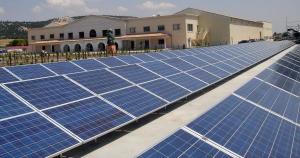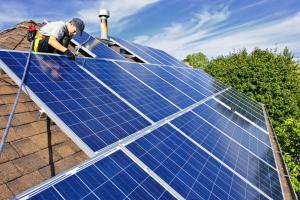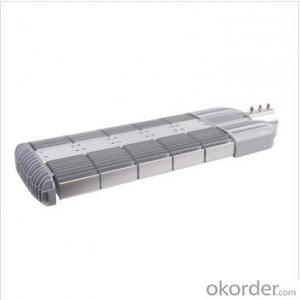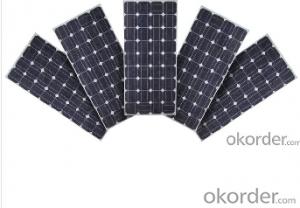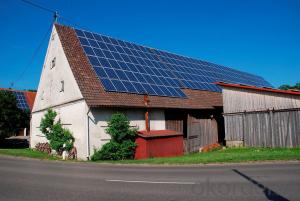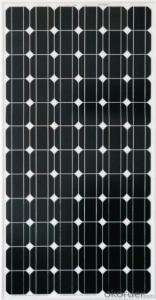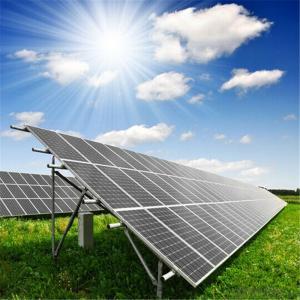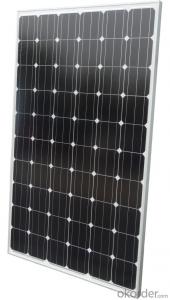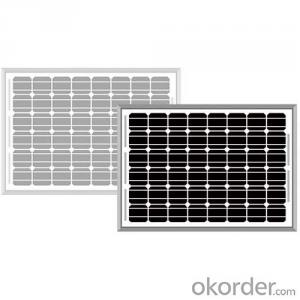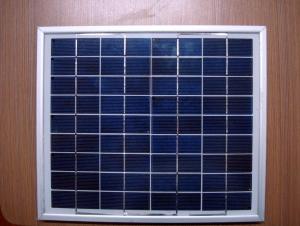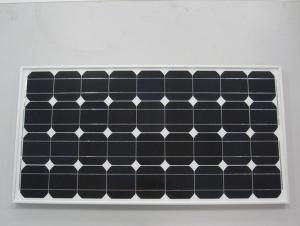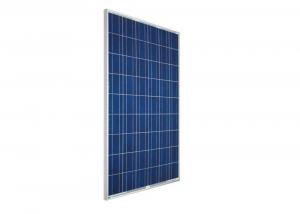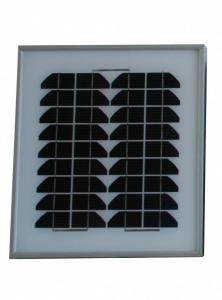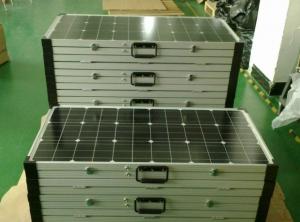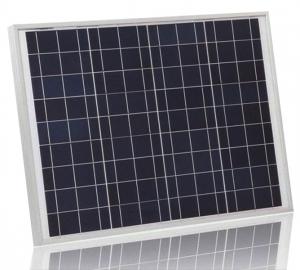200w Monocrystalline Solar Module Parallel Wiring Solar Power System
- Loading Port:
- Shanghai
- Payment Terms:
- TT OR LC
- Min Order Qty:
- 10000 watt
- Supply Capability:
- 1000000 watt/month
OKorder Service Pledge
OKorder Financial Service
You Might Also Like
Specification
Product Description
200W Monocrystaline Solar Module Solar Power System
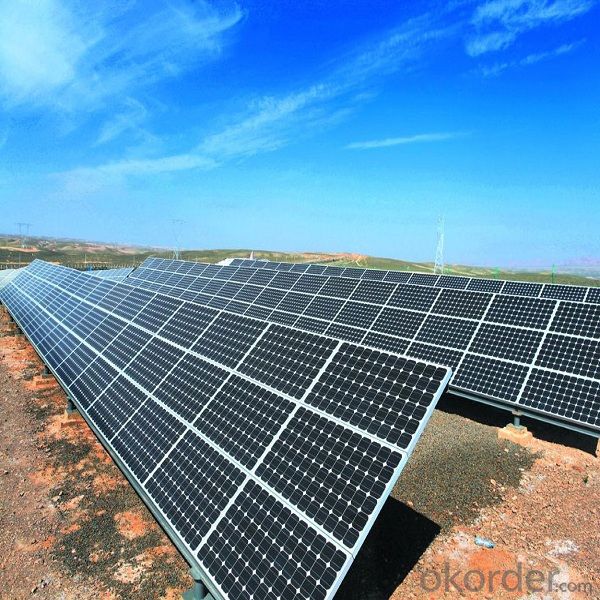
Specifications for solar panel system:
| Type of cell | Mono |
| Max. power (Wp) | 200W |
| Max. power voltage (V) | 37V |
| Max. power current (A) | 5.5A |
| Open circuit voltage (V) | 44.6V |
| Short circuit current (A) | 6A |
| Number of cells (Pcs) | 72 |
| Size of module (mm) | 1580*808*35mm |
| Max. system voltage (V) | 1000 |
| Temperature coefficients of Isc (%) | + 0.1/ °C |
| Temperature coefficients of Voc (%) | -0.38/ °C |
| Temperature coefficients of Pm (%) | -0.47/ °C |
| Tolerance Wattage (e.g. +/-3%) | +/-3% |
| Surface Max. Load Capacity | 60m/s(200kg/sq.m) |
| Weight per piece (kg) | 16kg |
| Junction Box Type | 4m, length 1000MM,TUV |
| Connectors and Cables Type | Type MC4 |
| Output Cables (mm) | φ=4mm², L=900mm |
| Cell Efficiency (%) | ≥18.6% |
| Output tolerance (%) | +/-3% |
| Frame (Material, Corners, etc.) | Aluminum |
| Front Glass | 3.2mm high transmission, Low Iron, Tempered Glass |
| Warranty | 10Years products warranty and 25 years 80% of power |
| Standard Test Conditions | AM1.5 1000mW/cm2 25°C |
| FF (%) | 72% |
| Operating temperature ºC | -40 ºC ~+85 ºC |
| OEM | Available |
Packaging for solar panel system:
2pcs/carton, 310pcs/20GP or custom
Advantages for solar panel system:
1.Long Service Life can reach more than 25 years
2.High Efficiency Solar Cells
3.Special Aluminum Frame Design,
4.High Transmission, Low Iron Tempered Glass
5.Advanced Cell Encapsulation.
6. Fast delivery.
Solar Panel System Application:
1. Solar power station, field operation some huge engineer construction;
2. Living house and home building;
3. Office building, factory and warehouse;
4. other industrial and commercial applications.
- Q: Do higher watt solar panels last longer, efficiency-wise? 3 installers gave me quotes with 3 different sunpower panels. The 225, 25, 20 watt panels. Whats the con and pro's of the different wattages?
- Power from solar panels depends upon its proper installation and the brightness of the Sun.
- Q: I read on CNN's website last year some company was creating a very cheap type of solar panel, that needs minimal maintenance and and has minimal glare from the sun. And the creator of the project said he one day wanted to cover every rooftop in the US with these solar panels. Seems like a good idea to me but I havent heared anything of it for a long time and I don't know what they are called... any help?
- About okorder /
- Q: Are there any fire risks associated with solar panels?
- Yes, there are fire risks associated with solar panels, albeit they are extremely rare. These risks can occur due to factors such as faulty installation, damaged wiring, or issues with the electrical components. However, industry standards and regulations have significantly improved over time, ensuring safer installations. Additionally, regular maintenance and inspections can help mitigate these risks and ensure the safe operation of solar panel systems.
- Q: Can solar panels be used for powering water treatment plants?
- Yes, solar panels can be used for powering water treatment plants. Solar energy can be harnessed to generate electricity, which can then be used to power the various processes and equipment involved in water treatment plants. This environmentally-friendly approach helps reduce reliance on fossil fuels and contributes to sustainable water management practices.
- Q: Can solar panels be installed on commercial buildings?
- Yes, solar panels can be installed on commercial buildings. In fact, many businesses and organizations are increasingly opting for solar panel installations to reduce their energy costs and environmental impact. By harnessing sunlight and converting it into electricity, solar panels provide a sustainable and renewable source of power for commercial operations.
- Q: solar panels or light parts
- They make lights that have solar panels built into them. Due to the solar cell, they can sense when it gets dark and thus switch on the light automatically. Look at Northern Tool or Harbor Freight web sites for ideas.
- Q: I have the wattage of solar panel but i dont know about the voltage amp; current rating of it. Plz explain me about the voltage rating of solar panel.
- The voltage rating and current rating are part of the specifications for the panel. You will have them listed on the spec sheet. The voltage number is usually the open circuit voltage of the panel, the voltage with no load. The current number is the short circuit current of the panel. In use, you need special electronics, called a Maximum Power Tracker (MPT) controller, which adjust the load to get the most power from the panel, and adjust the voltage output via a DC-DC converter to the optimal conditions to charge the attached battery. how to take batteries as per solar wattage ? sorry, don't understand this.
- Q: Can someone tell me the average savings you get PER solar panel installed? I do not have the money to invest in a bunch of them at once, so I am forced to buy one at a time, when I have the money. So how much can I expect to save after I buy the first one?
- No matter what or how you do it it is best to get off coal and nukes. So it cost a little bit of money you are buying 30 years of electric. How much will you spend adding in cost of living increases over the next 30 years? Solar really is pretty cheap if you take the time to do the long term math. If you use your cost at to days rates it does seem like a lot. But if you do the math like in real life with 3.5% compounded cost of living increases per year and 6.5% fuel increases per year. Well, you pay a lot more renting power. One other thing to think about and Al Gore keeps pointing it out is, Will your off spring be alive in 50 years from now if you don't buy the solar panel? Kind of like not going to the doctor because you can't afford the bill. Well I would rather owe a bill to a doctor that I will have trouble paying then not be alive at all to try. If you don't have the money to jump in and go full blown Green you should buy a starter system. You can get a system that can be expanded to 3000 watts (enough to power an energy efficient home). Would cost you about $8000 USD to get started and then you could add three solar modules at a time till you get it up to the 3000 watt max. And even have backup power. Or you could just buy a 000 watt system for about the same price and just add 3 of them over the years. There are many ways to get started. The deal is everyone needs to get started even if it is a small system. If all 50 million homes in the USA would install a small 000 watt system with 4 hours of sun light a day. We would provide (000 watts times 4 hours times 365 days times 50 million homes) 29,000,000,000,000 watts not from coal or nuke plants per year. I wonder if that would help?
- Q: Aren't batteries bad for the environment?Toxic?Expensive? With small solar panels phones, iPod's, laptops other small electronics could be smaller, slimmer, more efficient cost people less to charge every day. Maybe a small battery inside as a backup and to store the Solar energy for night time. But overall, batteries should be optional. So big question:Why aren't electronics being produced with solar panels?
- Solar panels could still be expensive, which would also raise the cost of the item.They also are made with chemicals that harm that enviroment(not too badly, but ya know..) You would also need to charge them, of course, in sunlight and most people enjoy the benefit being able to plug something in and still being able to use it. Not saying it's a bad idea, just the world we live in.
- Q: Are there any government incentives for installing solar panels?
- Yes, there are various government incentives available for installing solar panels. These incentives can include tax credits, grants, and rebates. They aim to promote the use of renewable energy sources and reduce reliance on traditional fossil fuels.
Send your message to us
200w Monocrystalline Solar Module Parallel Wiring Solar Power System
- Loading Port:
- Shanghai
- Payment Terms:
- TT OR LC
- Min Order Qty:
- 10000 watt
- Supply Capability:
- 1000000 watt/month
OKorder Service Pledge
OKorder Financial Service
Similar products
Hot products
Hot Searches
Related keywords
